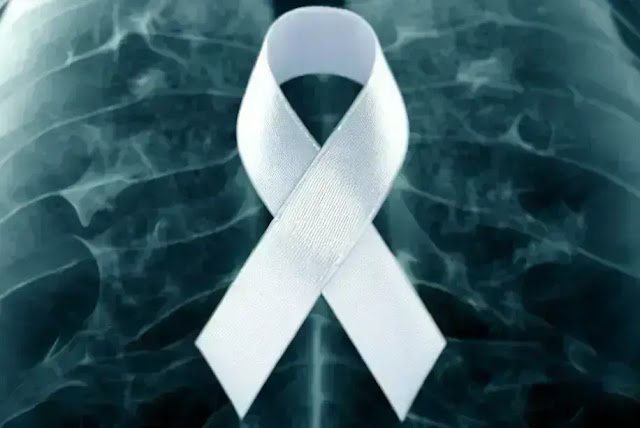What is the ribbon color for lung cancer - Did you know that ribbons have become powerful symbols for raising awareness about various causes? One such cause is lung cancer, a disease that affects millions of people worldwide. In this article, we will delve into the significance of the ribbon color associated with lung cancer. By understanding the meaning behind this ribbon, we can contribute to spreading awareness, supporting those affected, and fostering hope for a brighter future.
The Ribbon Color for Lung Cancer and Its Significance
The ribbon color associated with lung cancer is white. This color has a specific connection to the cause and carries deep significance.
What Is the Historical Background and Adoption of the White Ribbon Color for Lung Cancer? The adoption of the white ribbon as the lung cancer ribbon color epitomizes the dedicated efforts of individuals and organizations in raising awareness. This symbolic representation reflects the unique challenges and distinctive characteristics associated with lung cancer.
The selection of the lung cancer ribbon color, specifically the white ribbon, has its roots in the late 20th century when ribbons emerged as symbols of solidarity and support. Gradually, the white ribbon garnered acknowledgment as the designated color for lung cancer, gaining widespread acceptance among the lung cancer community.
What Does the Symbolism of the White Ribbon Represent in the Context of Lung Cancer Awareness? The white ribbon symbolizes purity, hope, and the aspiration for a lung cancer-free future. It also serves as a symbol of remembrance for those who have lost their lives to the disease.
The white ribbon also acts as a symbol of remembrance, paying tribute to those who have lost their lives to lung cancer. It serves as a solemn reminder of the lives affected by this illness and the ongoing need to strive for better outcomes. By wearing or displaying the white ribbon, individuals honor the memories of loved ones while demonstrating their commitment to supporting current patients and working towards a brighter future.
Furthermore, the white ribbon underscores the importance of ongoing research and advancements in lung cancer treatment. It serves as a call to action, urging society to continue investing in scientific exploration, innovative therapies, and improved screening methods. The symbolic power of the white ribbon encourages collaboration among researchers, healthcare professionals, patients, and advocates, fostering a collective determination to overcome the challenges posed by lung cancer.
The Power of Symbols and Ribbons for Lung Cancer
Symbols play a crucial role in our society, as they have the power to transcend language barriers and communicate messages with great impact. They tap into our emotions, triggering deep feelings and associations. Ribbons, in particular, have emerged as powerful symbols for various causes, serving as tangible representations of support, unity, and hope.
Symbols have the unique ability to evoke emotions and create a sense of connection among individuals. When people see a ribbon, they immediately recognize its significance and the cause it represents. Ribbons serve as visual cues that capture attention and engage people in conversations about important issues. They act as beacons, drawing individuals together and fostering a shared sense of purpose.
Ribbons as Awareness Symbols: Ribbons have gained widespread recognition as symbols for raising awareness about different causes. For instance, the pink ribbon has become synonymous with breast cancer awareness, symbolizing support for patients, survivors, and ongoing research. Similarly, the red ribbon has become a symbol of solidarity in the fight against HIV/AIDS, representing compassion and a commitment to ending the stigma associated with the disease.
The effectiveness of ribbons as awareness symbols lies in their ability to capture attention and spark conversations. When individuals wear or display ribbons, they become walking ambassadors for the cause, inviting inquiries and discussions. This simple act of showcasing a ribbon can create a ripple effect, generating awareness and encouraging others to join the cause.
Raising Awareness and Supporting Those Affected by Lung Cancer
Raising awareness about lung cancer is crucial for early detection and prevention. Understanding the prevalence and impact of the disease globally helps promote informed action.
Lung cancer is one of the most common types of cancer and is associated with significant morbidity and mortality. By raising awareness, we can educate the public about the risk factors, symptoms, and available resources for lung cancer prevention, screening, and treatment. Also, read about lung caner screening.
Initiating Conversations and Sharing Significance: Wearing the white ribbon serves as a conversation starter, enabling open discussions about lung cancer. By sharing the significance of the white ribbon, we can create awareness and encourage dialogue about the disease.
When people see the white ribbon, it prompts questions and curiosity. This provides an opportunity to discuss lung cancer, its impact on individuals and communities, and the importance of supporting those affected.
Providing Support: Individuals battling lung cancer face physical, emotional, and financial challenges. It is vital to provide resources, assistance, and a supportive community to help them navigate their journey.
Support can come in various forms, including emotional support, access to healthcare services, and assistance with practical needs. By offering understanding, empathy, and practical help, we can make a positive difference in the lives of lung cancer patients and their loved ones.
Taking Action for Change of Lungs Cancer
Participating in fundraising events, volunteering at local organizations, or organizing awareness campaigns can contribute to supporting lung cancer causes. Several reputable lung cancer charities and initiatives provide avenues for involvement.
Fundraising efforts can help raise funds for research, patient support programs, and initiatives aimed at raising awareness. Volunteering your time and skills can make a meaningful impact by supporting lung cancer patients and their families, organizing events, or advocating for better policies and resources.
Advocacy and Research: Advocating for increased funding and research for lung cancer prevention, treatment, and support is essential. Various advocacy groups and research institutions are dedicated to combating lung cancer and improving patient outcomes.
Advocacy involves raising awareness among policymakers, healthcare providers, and the general public about the challenges faced by lung cancer patients. By advocating for improved access to screening, early detection, treatment options, and support services, we can help shape policies that address the needs of those affected by lung cancer.
What color is the ribbon for lung cancer - By understanding the ribbon color for lung cancer and its significance, we have the power to actively contribute to raising awareness and supporting those affected by this disease! Let's unite in wearing the white ribbon, initiating conversations, and taking bold action to create a wave of positive change. Together, we can bring hope, and comfort, and ultimately transform the lives of individuals impacted by lung cancer!
Remember, the white ribbon is not just a symbol; it represents a community of strength, compassion, and resilience working tirelessly towards a world free from the burdens of lung cancer! Through our collective efforts, we can make a profound difference in the lives of those affected by this devastating disease. Let us stand together, raise our voices, and take decisive action to create a future where lung cancer is conquered and lives are filled with renewed hope and vitality!


